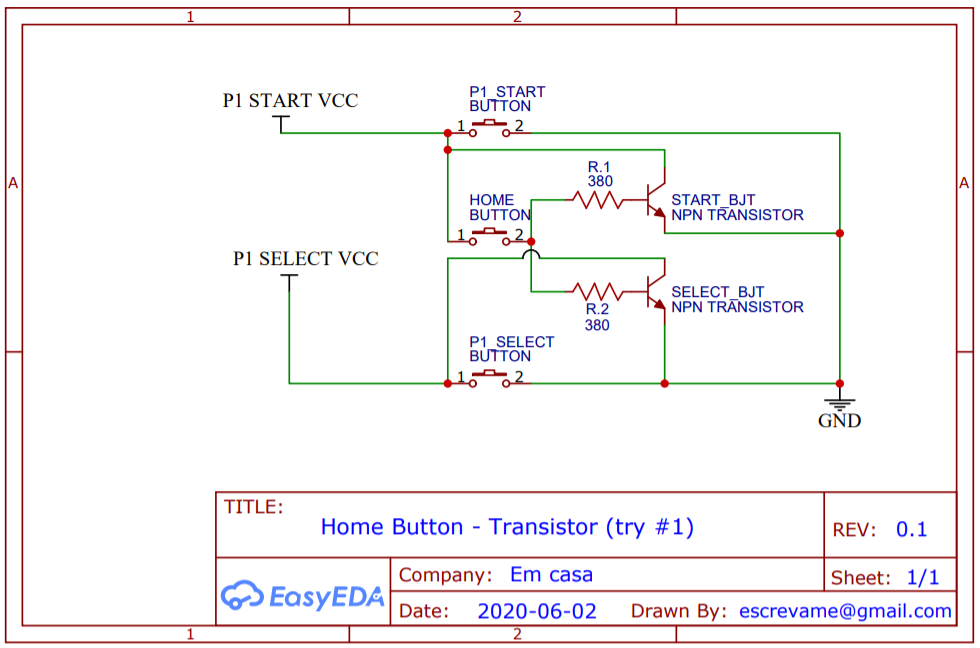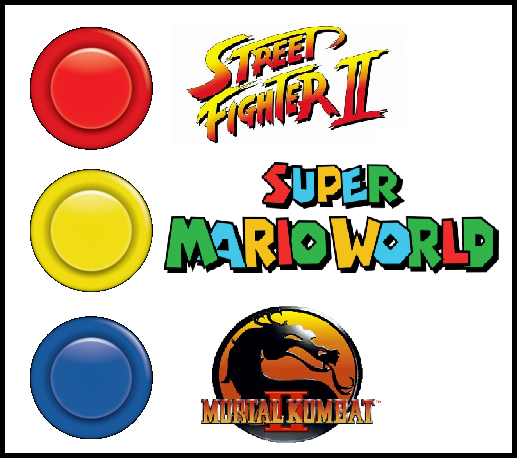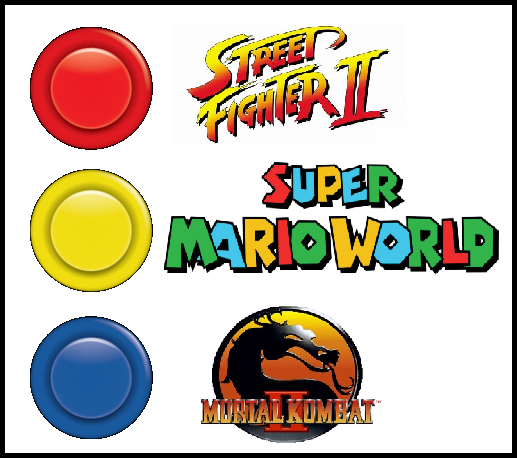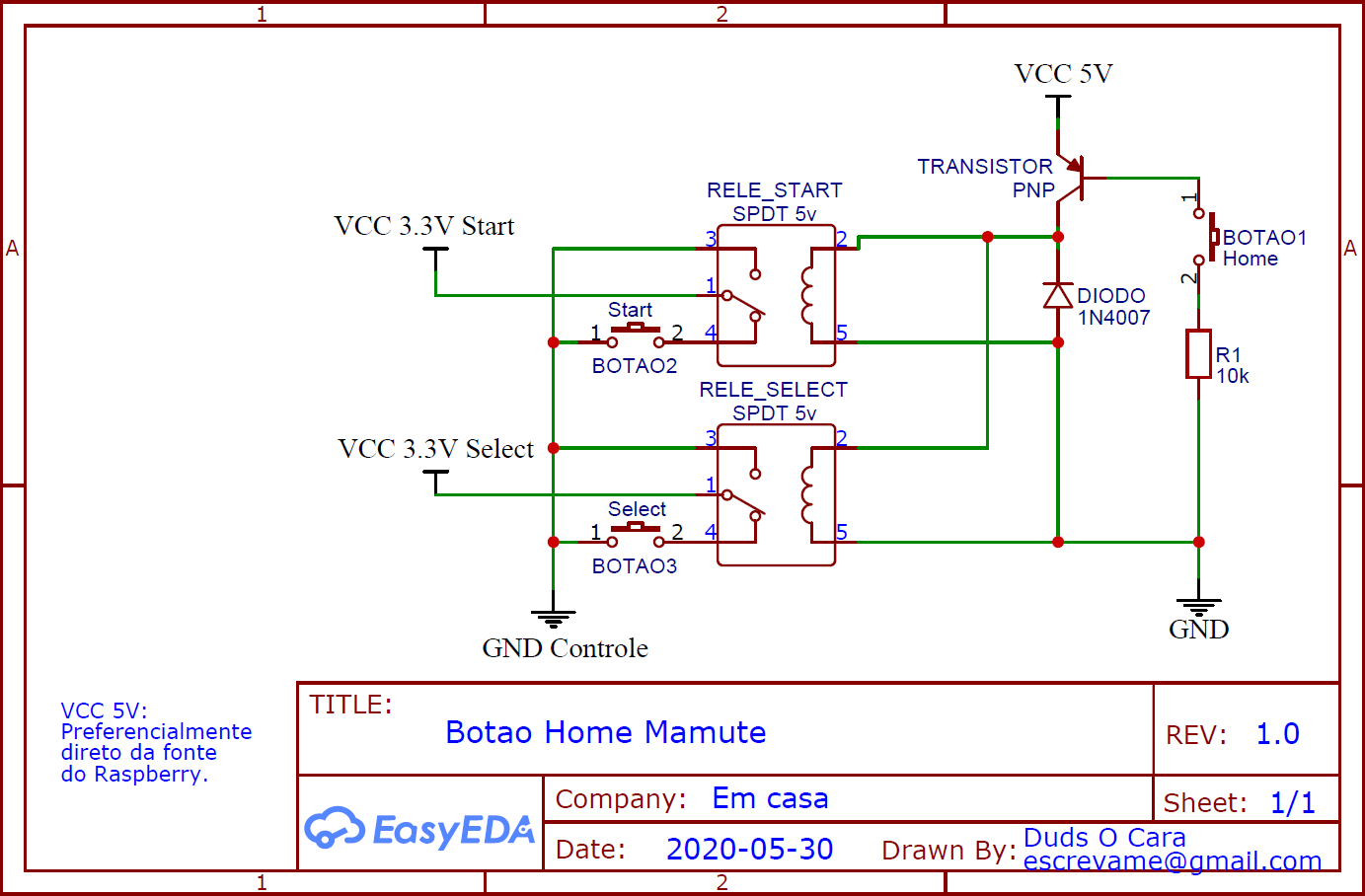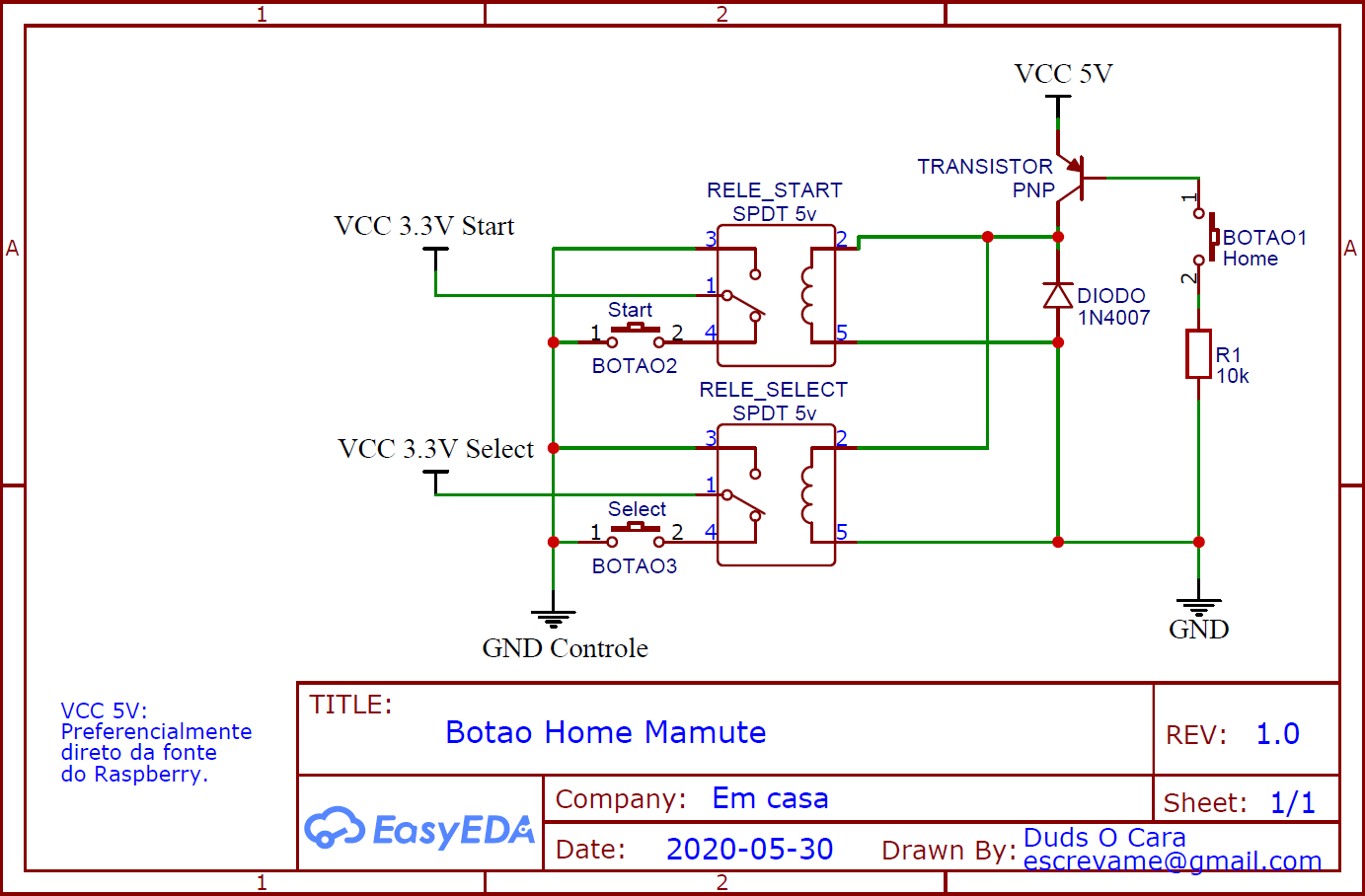Fala povo! Novo por aqui e queria fazer uma contribuição de boas vindas.
Há alguns anos, quando construí meu fliperama arcade, deixei espaço para um Botão Home no centro da caixa de controles. Isto é, um botão dedicado que retornasse à tela de seleção de jogos do Recalbox. No entanto, como precisava pensar um pouco num circuito para isolar os pinos +3.3v de Start e Select do Raspberry Pi 3 B+ (não dá pra simplemente unir os dois botões num terceiro sem perder essas funções isoladamente), deixei essa implementação pra depois.
Início deste ano, depois de uma festa, decidi que o meu fliperama precisava de fato de um Botão Home. Nem todos os convidados sabiam que pressionar Start + Select retornava ao menu inicial (na verdade não é algo intuitivo).
Então resolvi compartilhar com vocês essa solução simples.
Custo do projeto: R$ 6 (fiz a cotação numa loja de eletrônica online da minha cidade, mas eu fiz com o que tinha aqui em casa).
Utilizei, além do botão Home, 2 relês SPDT 5V, um transistor PNP, um diodo 1N4007 e um resistor de 10k. A escolha dos componentes foi feita com base no que eu tinha aqui de resto, sobrando em casa, mas quem manjar de eletrônica consegue modificar o projeto e trocar os relês por outros transistores e deixar o projeto com custo de R$1 (cada relê custa aqui por volta de R$ 2,90 e cada transistor R$ 0,14). Mas enfim, quem quiser fazer igual ao meu, é só copiar o projeto.
É desejável uma plaquinha universal de circuito impresso para soldar os componentes, no entanto, é possível soldar os componentes diretamente nos fios sem placa alguma ou utilizar um pedaço de papelão duro, caixa de fósforos daquelas Fiat Lux grande ou caixa de algum remédio; ou ainda uma plaquinha qualquer de madeira. A base não importa tanto desde que você consiga manter os componentes sem ficar encostando um no outro causando curtos.
Eu fiz o projeto para o meu Raspberry Pi 3 B+ com Recalbox, utilizando os controles do Player 1 com o retorno à tela inicial com os botões Start e Select (hotkey) utilizando o chicote GPIO num gabinete de fliperama construído por eu mesmo. No entanto, esse esquema eletrônico funciona para qualquer tipo de controle (se precisar encolher o projeto pra controles pequenos ainda existe a opção de remodelar apenas com transistores).
Segue o diagrama esquemático:
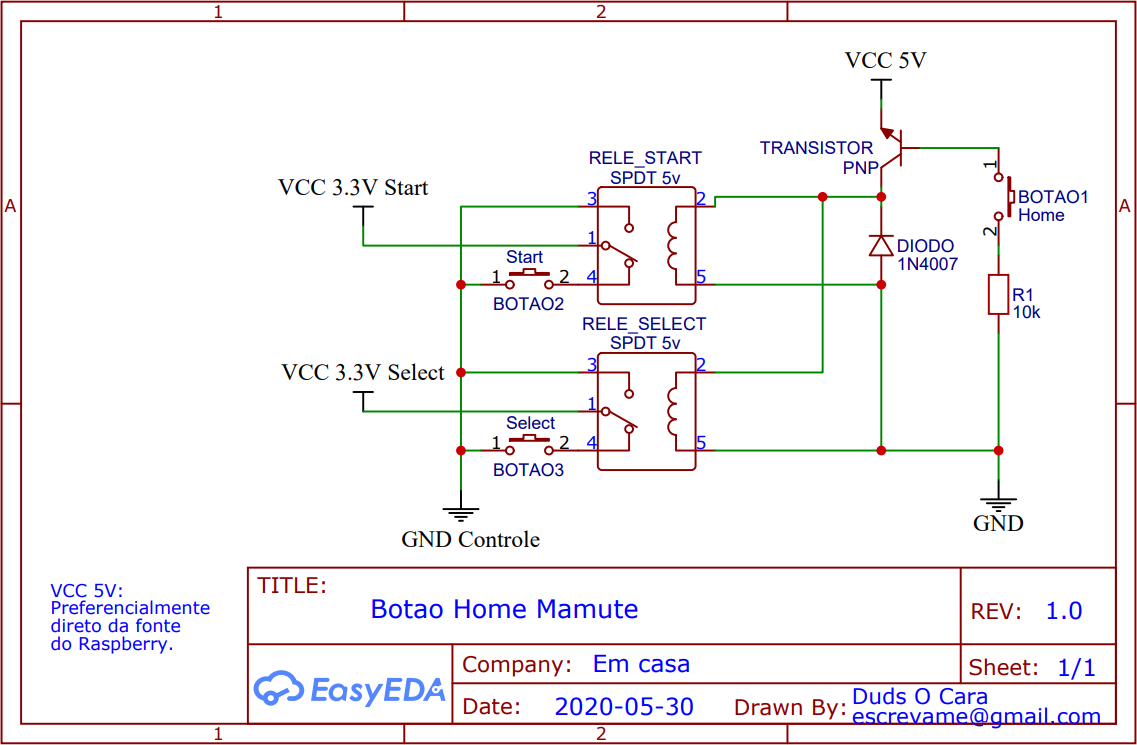
Na sequência, quem quiser simular o circuito, segue a validação do projeto no Tikercad:
https://www.tinkercad.com/things/9ap3I2M21ws
Vídeo: Circuito implementado na prática (funciona!)
https://www.youtube.com/watch?v=FTBdr8fgu2A
Vídeo: Mostrando o Botão Home funcionando em jogo
https://www.youtube.com/watch?v=1hJHnYA5F_Q
É isso ae povo! Abraços.

 (in fact, when I build my pinball machine I'll use as many as possible of the most louder relays in order to recreate the old school sounds).
(in fact, when I build my pinball machine I'll use as many as possible of the most louder relays in order to recreate the old school sounds).